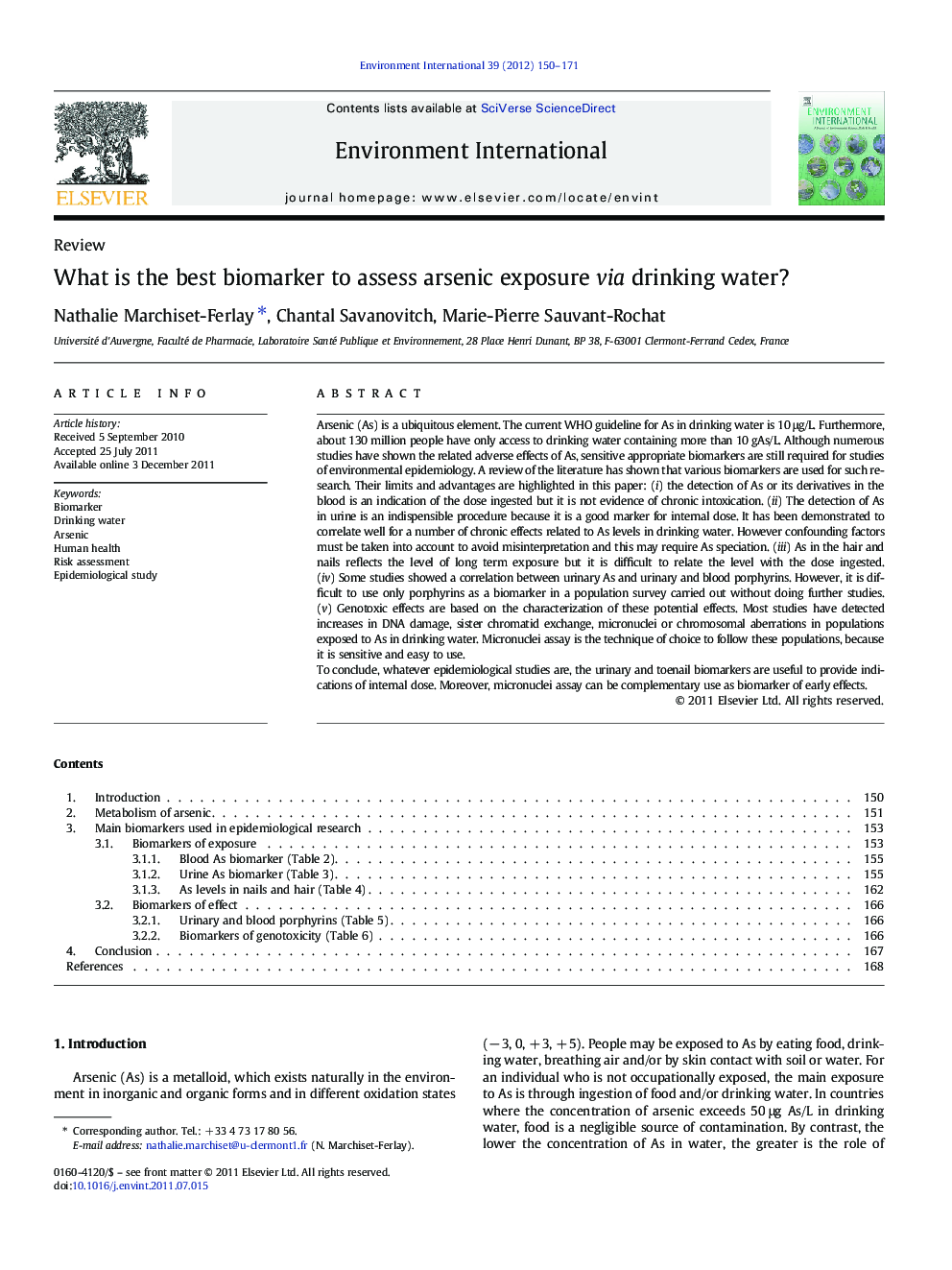| کد مقاله | کد نشریه | سال انتشار | مقاله انگلیسی | نسخه تمام متن |
|---|---|---|---|---|
| 4423147 | 1308811 | 2012 | 22 صفحه PDF | دانلود رایگان |

Arsenic (As) is a ubiquitous element. The current WHO guideline for As in drinking water is 10 μg/L. Furthermore, about 130 million people have only access to drinking water containing more than 10 gAs/L. Although numerous studies have shown the related adverse effects of As, sensitive appropriate biomarkers are still required for studies of environmental epidemiology. A review of the literature has shown that various biomarkers are used for such research. Their limits and advantages are highlighted in this paper: (i) the detection of As or its derivatives in the blood is an indication of the dose ingested but it is not evidence of chronic intoxication. (ii) The detection of As in urine is an indispensible procedure because it is a good marker for internal dose. It has been demonstrated to correlate well for a number of chronic effects related to As levels in drinking water. However confounding factors must be taken into account to avoid misinterpretation and this may require As speciation. (iii) As in the hair and nails reflects the level of long term exposure but it is difficult to relate the level with the dose ingested. (iv) Some studies showed a correlation between urinary As and urinary and blood porphyrins. However, it is difficult to use only porphyrins as a biomarker in a population survey carried out without doing further studies. (v) Genotoxic effects are based on the characterization of these potential effects. Most studies have detected increases in DNA damage, sister chromatid exchange, micronuclei or chromosomal aberrations in populations exposed to As in drinking water. Micronuclei assay is the technique of choice to follow these populations, because it is sensitive and easy to use.To conclude, whatever epidemiological studies are, the urinary and toenail biomarkers are useful to provide indications of internal dose. Moreover, micronuclei assay can be complementary use as biomarker of early effects.
► Limits and advantages of As-biomarkers and derivates for epidemiological research.
► Focus on biomarkers of exposure (As in blood, urinary, hair, nails).
► Biomarkers of effect (blood porphyrins, DNA damage, sister chromatid exchange, chromosomal aberrations and micronuclei).
► Urinary and toenail biomarkers are useful to study internal dose of As.
► Micronuclei assay use as biomarker of early effects.
Journal: Environment International - Volume 39, Issue 1, February 2012, Pages 150–171